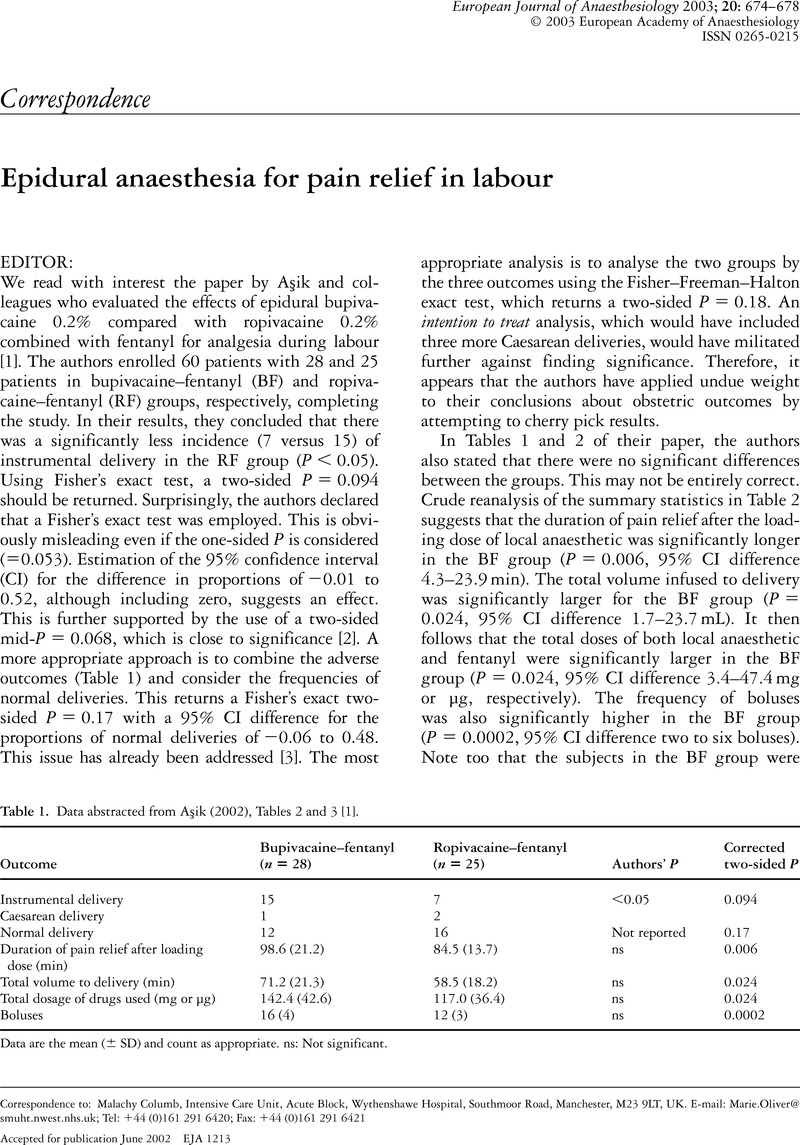No CrossRef data available.
Article contents
Epidural anaesthesia for pain relief in labour
Published online by Cambridge University Press: 12 July 2005
Abstract
An abstract is not available for this content so a preview has been provided. Please use the Get access link above for information on how to access this content.

- Type
- Correspondence
- Information
- Copyright
- 2003 European Society of Anaesthesiology
References
Aşik I, Göktug I, Gülay N, Alkiş N, Uysalel A. Comparison of bupivacaine 0.2% and ropivacaine 0.2% combined with fentanyl for epidural analgesia during labour. Eur J Anaesthesiol 2002; 19: 263–270.Google Scholar
Columb MO. One-sided P values, repeated measures ANOVA; two sides of the same story! Anesth Analg 1997; 84: 701–702.Google Scholar
Columb MO, Polley LS. Potencies and probabilities: one-sided P values suggest a one-sided story. Anesth Analg 2001; 92: 278–279.Google Scholar
Capogna G, Celleno D, Lyons G, Columb M, Fusco P. Minimum local analgesic concentration of bupivacaine increases with progression of labour. Br J Anaesth 1998; 80: 11–13.Google Scholar
Altman DG. Practical Statistics for Medical Research.London, UK: Chapman & Hall, 1991: 170–171.




